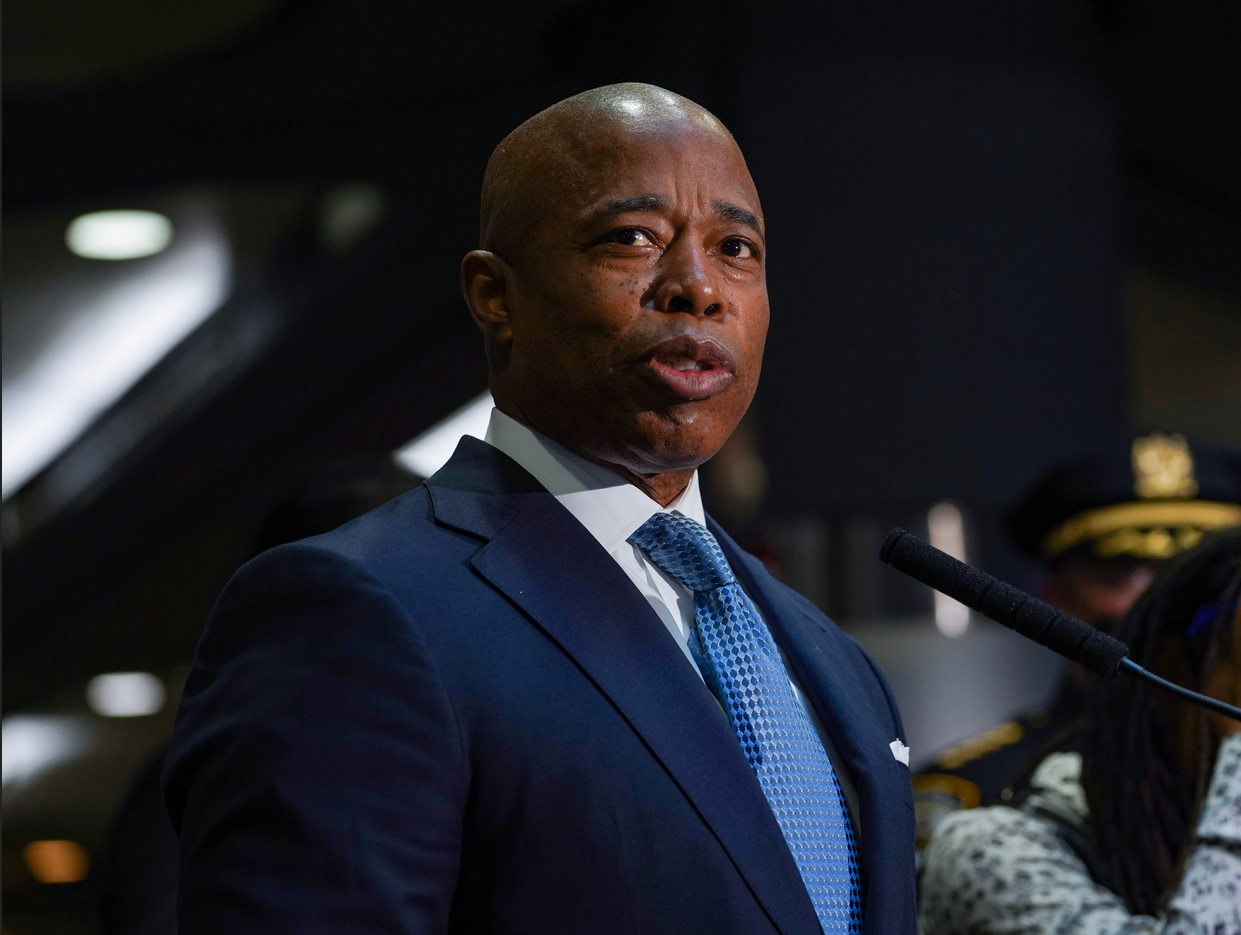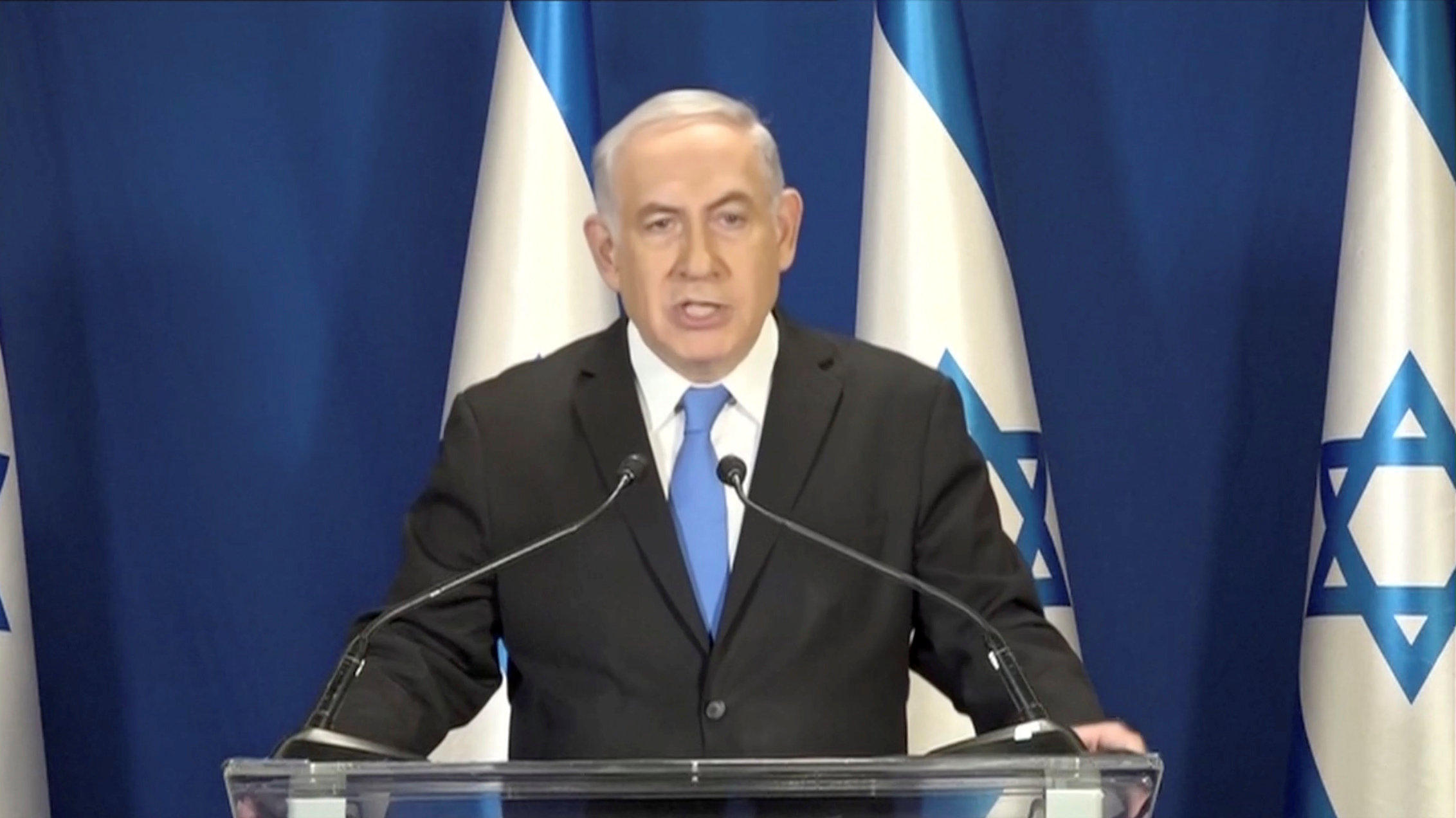[A Big Tribute To Jitu Weusi]
The death of Jitu Weusi on May 22, 2013 of liver cancer represents a great loss to the community and to the scholarship on the history, culture and political activism of Black people in New York City.
The New York Daily News’ obituary while not reflecting this did mention that he had been accused of anti-semitism, thus sullying his name even in death.
Weusi’s decades of self sacrifice and work deserve a more in depth look at his life. He represented not just the roots but the best of the Black Power movement here in NYC. He put into practice what Black scholars had only theorized. Weusi literally fought for educational opportunities for Blacks and Latinos that are mostly taken for granted today.(1)
Born and bred in Brooklyn, Weusi, originally named Leslie Campbell, came from a lower working class family. He’s not from the streets but he is off the block. His mother, who was involved in the local Parent Teachers Association (PTA), sent him as a kid to work at his cousin’s newsstand. In his words, this was his baptism to the world of jazz and the community. Many of the guys who hung out with his cousins at the newsstand were jazz people and it was his cousins who took him to his first jazz concert.(2)
He attended Brooklyn Tech High School, which at the time was almost all White. Despite the fact it was one of the city’s most prestigious high schools, he transferred out to Franklin Lane High School to be in a more integrated student population.
A basketball scholarship got him through Long Island University, which as the rest of the colleges in NYC at the time, was as White as Brooklyn Tech. With a B.A. in history he started working as a junior high school (JHS) teacher right out of college. He also joined the Brooklyn chapter of the Congress of Racial Equality (Brooklyn CORE), a specifically interracial civil rights group that pioneered the non-violent direct action techniques that came to characterize the civil rights movement. Brooklyn CORE chairman Ollie Leeds, a former member of the Communist Party, had been a friend of his father who was also a Marxist. This was where Les Campbell first learned how to organize, this was where he first became an activist.
As a social studies teacher at JHS 35, Campbell regularly went to Harlem to hear Malcolm X speak at his weekly street rallies. While there, he went to the world renowned bookstore, Lewis Michaux’s “House of Common Sense and the Home of Proper Propaganda” to pick up materials to use for students in his class. Besides photos and books on Africa, he also brought in jazz records such as Max Roach’s Freedom Now Suite. The positive response he got encouraged his combining education and culture.
Although a member of the United Federation of Teachers (UFT), then a mostly White organization, he and other teachers, including now city councilman Al Vann, formed the Negro Teachers Association. Initially it was a reaction to the UFT’s decision not to support the 1964 Citywide School Boycotts protesting the de facto segregation of the city’s public school system. Renamed the African American Teachers Association (AATA), and using the term more than two decades before Jesse Jackson made it popular, its mission extended to fighting the injustices of the school system and the calculated “mis-education of our children”. (3)
Much of what he did with the AATA was based on his experience with Brooklyn CORE. As CORE became a Black Power organization, it emphasized the creation of independent Black schools and the gaining of political power by running Black people for office.
Campbell was transferred from JHS 35 for taking students to a memorial for Malcolm X at another junior high school, I.S. 201. That Harlem school and the one he was transferred to in Bedford- Stuyvesant, JHS 271, were two schools that were part “of an experiment approved by the Board of Education (BOE) and supported by the Ford Foundation to test community control of local schools.”(4)
Control of these schools had been given to a governing board of local parents and residents. An assistant principal named Herman Ferguson who worked as a consultant to the project was the one who suggested Campbell for JHS 271, considered a “flagship school of the project”.(5)
Ferguson, who was one of the speakers at the memorial, had been charged with conspiracy to assassinate the heads of both the Urban League and the NAACP, a plot later revealed to be part of the FBI’s counter intelligence program, COINTELPRO.
When the governing board for JHS 271 decided to dismiss several teachers for low performance, the BOE and the UFT attempted to usurp the board’s authority. The teachers had also participated in an earlier illegal strike by the UFT which was said to have crippled the city’s public school system. When the police forcibly brought them back into the school, Campbell was part of the demonstration group that sought to enforce the board’s decision. Made up of parents, school employees, local residents and members of Brooklyn CORE (including then chairman Sonny Carson), the demonstrators stood on the front steps of JHS 271 and physically blocked the teachers from entering, resulting in an all out brawl between them and police. Over the next few months, Campbell and other school staff were indicted by a grand jury and suspended by the BOE for the continual harassment and intimidation of the returning teachers.
Just before his suspension, Campbell was also the program director for the adult education classes held at night in JHS 271. One of those classes taught by Sonny Carson was a course on “how to stage community demonstrations and how past revolutions had been planned and carried out”.(6)
During Campbell’s suspension he served as the adviser for a group of high school student activists, the Student Citywide Strike Committee, by helping them to organize NYC students. The group’s name was a reference to the 1964 Citywide School Boycotts. According to the New York Times, Campbell “played a leading and public role in inciting high school students to an illegal strike against the schools. He specifically urged them to march on Ocean Hill-Brownsville, setting off a dangerous clash with the police and much violence”. (7)
One of the groups that made up the committee was the African American Students Association (AASA) whose name referenced the teacher’s organization Campbell founded.
These were the events that led Campbell with members of the AASA and other supporters to start the Uhuru Sasa Shule which means Freedom Now School in Kiswahili. “Freedom Now” was a slogan used by CORE at many of its demonstrations. An outgrowth of the Freedom Schools of the 1960’s, Uhuru Sasa became one of the first and arguably most influential of the independent Black schools of the 1970’s.
Along with its emphasis on Pan-Africanism, it taught core subjects such as math, science, language arts and history, as well as martial arts and Kiswahili as a second language. Campbell changed his name to Jitu Weusi, Kiswahili for Big Black. As the school’s headmaster, he was often referred to as Baba Jitu, Baba being Kiswahili for father.
Uhuru Sasa was just one part of a larger cultural and educational center known as the EAST which was dedicated to “self determination, nation building and Black nationalist consciousness”.(8)
Operating out of 10 Claver Place, the East had multiple operations, among them a bookstore, restaurant, catering business, food co-op, a newspaper called Black News, a recording label and its legendary jazz venue.
Its list of performers included the Last Poets, Freddie Hubbard, Betty Carter, McCoy Tyner, Max Roach, Sun Ra, Lee Morgan, and Roy Ayers among others. Pharoah Sanders named his album, “Live from the East” for the venue and Mtume recorded his album, Alkebulan, there. The song, www.corenyc.org/omeka/items/show/297″ ‘Jitu’, from Sanders’ abum, Shunkuru, was also named after Weusi, himself an avid collecter and historian of jazz.
The EAST was also a branch of Amiri Baraka’s Congress of African People (CAP), another Black cultural nationalist organization that played a major role in efforts to create a “unified Black political party”. (9)
As a branch of CAP, Weusi and the EAST were responsible for the promotion of Kwanzaa in NYC. Its work became a precursor to the Afrocentric movement of the 1980’s and 1990’s.
The EAST’s legacy can also be seen in its African Street Festival now known as the International African Arts Festival. What started off as just a block party for the school has grown into an annual celebration attended by thousands from all over the country and the world. Over the years, it has hosted such notable performers as Stevie Wonder, KRS One, and Fela.
Besides raising his own children, Weusi also wrote a regular column for The Amsterdam News, was an instructor at New York City Community College and directed a cultural program at Pratt University.
Along with Sonny Carson and Al Vann he initiated the proposal for what eventually became Medgar Evers College in Brooklyn. Then there was the period of time he spent helping build the EAST’s cooperative farm in Guyana with other members of the EAST family as part of their continuing efforts to put ideas of self reliance and nation building into practice.
He could never stay away from Brooklyn, though. As the 1970’s turned into the 1980’s, Weusi along with others like Rev. Herbert Daughtry, created the National Black United Front (NBUF). A coalition of local grass roots organizations, it addressed cases of police brutality and the questionable killings of young Blacks by the New York Police Department. It also sought to “evaluate and analyze” (10) the effect of government surveillance and programs like COINTELPRO on the movements of the 1960’s and 1970’s. During one of its demonstrations at the United Nations, Weusi was arrested. Despite the arrest, one of the few in his time as an activist, the Brooklyn borough president designated October 25, 1981 as Jitu Weusi Day.
When Uhuru Sasa finally folded due to lack of finances, Weusi went back to the public school system in 1986. He was made an assistant principal at JHS 258 in Bedford-Stuyvesant.
During the Ocean Hill-Brownsville demonstrations in 1967, only four out of 865 principals and 12 out of 1,500 assistant principals in NYC were Black. The numbers have increased significantly since then, thanks in part to his work. Despite enormous support from the local community, however, Weusi was never allowed to be a principal. (11)
Over the years, he ran unsuccessfully for state senator, city councilman, and for governor, usually in independent political parties which he helped form such as the Unity Party –and later the Freedom Party. His experience with third party politics led to him organizing for Reverend Al Sharpton’s Senatorial campaign in 1992 and for Jesse Jackson’s two presidential elections bids.
Such grassroots efforts while unsuccessful in the short term helped “transform the sphere of politics” and paved the way for others like President Barack Obama. Scholars like Peniel Joseph argue that it was “Black Power militants who really precipitate(d) the utilization of racial solidarity to bring Black elected officials (to) prominence”. (12)
The campaign Weusi is most well known for, however, was that of David Dinkins in his successful bid to become the first Black mayor of NYC. Weusi and Sonny Carson had been hired by the Dinkins campaign to do voter registration in Brooklyn, work Brooklyn CORE had been doing since the 1960’s. Cleveland CORE’s voter registration efforts had played a crucial role in the election of the country’s first Black mayor, Carl Stokes. Weusi, however, quit the campaign over a controversy created by the opponent, Rudy Guiliani, involving a poem Weusi read over the air on WBAI in 1968 that was crudely critical of Jews. He was labeled as anti-semitic and even though he apologized, the charges stuck with Weusi over the years. In the many articles on the issue, which often implied it was Weusi who wrote the poem, his side was rarely discussed.
The poem, which the show’s host asked Weusi to read, had actually been written by a 15 year old student. It was only one of several written by his students and read on the show. Weusi used the poem to illustrate the type of enmity created by the mostly Jewish UFT and of how the students were pointing to the fact that these historical victims of racism were just as guilty of being racist.
The poem, usually referred to by the beginning of its opening line, “Hey Jew boy”, had been dedicated to Al Shanker, head of the UFT. Even though he had participated in many civil rights demonstrations, specifically with CORE, Shankar went well out of his way to portray the Blacks and Latinos opposed to him and the UFT as Hitleresque monsters who wanted to “kill Whitey”. He also warned parents that volunteers who kept the schools open while the UFT was on strike may have “transmissible diseases” (13), stereotyping Blacks and Latinos as unwashed and dirty.
As professor Clarence Taylor wrote, “Al Shanker’s attempt to play on the fears of teachers by falsely painting a picture of the whole community control movement as anti-Jewish and out to remove Jewish teachers from their position further heightened the tension and distrust between the Black and Jewish communities.’ (14)
Many former members of CORE who were Jewish had also been against Shanker’s actions. In my interview with Alan Gartner of national CORE, who had worked with Shanker over the years, he famously described Shanker’s actions as not just racist, but “fucking racist”.
On the other hand, Arnie Goldwag, whose name had once been synonymous with Brooklyn CORE, www.corenyc.org/omeka/items/show/298″ risked his job as an investigator for the Administration for Children’s Services by insisting a young girl who had to be taken out of an abusive home be placed in the care of Weusi rather than the foster care/group home system, believing Weusi could do the job through the EAST. This was after Goldwag, the brother of an orthodox rabbi, had been pushed out of Brooklyn CORE as it went Black Power, a move for which he blamed Sonny Carson, a man who he had no kind words for. (15)
But for Weusi, his legacy according to the Daily News is little more than that of anti-semitism.
He’s not remembered in the Daily News for influencing the many grassroots candidates who decided to run for political office in ways Black and Latinos had not done before, such as his own nephew, Jelani Mashariki. Nor is he remembered as the co-founder of the Central Brooklyn Jazz Consortium and its annual Jazz Festival. He’s certainly not celebrated for the thousands of students he’s helped over the years, including a whole new generation of movement scholars such as Dr. Brian Purnell and his recent book, Fighting Jim Crow in the County of Kings.
Jitu Weusi, who was at the center of Black politics and culture in Brooklyn, was the epitome of “the grassroots”. He was the original Occupy Wall Street, a true O.G in this thing of ours.
His passing is a reminder of the scholarship that still needs to be done. For example, whatever happened to the students of the EAST – was the experiment a success? What was the extent of the police and intelligence agencies surveillance and of Weusi and other political activists?
How did it affect them? What are the correlations between them and today’s activists fighting against the Stop-and-Frisk laws? What ever happened to peace? Peace…
1. Beekman, Daniel. ‘Brooklyn activist Weusi dies, 73’. New York Daily News
2. Jenkins, Willard. ‘Remembering The East with Jitu Weusi’; Jazz & Self-Determination in Brooklyn. openskyjazz.com
3. Interview with Les Campbell, Eyes on the Prize One Interviews. Washington University Digital Gateway
4. Buder, Leonard. ‘Teacher Ousted Over I.S. 201 Show’. Feb. 28, 1968. New York Times
5. Interview with Les Campbell, Eyes on the Prize One Interviews. Washington University Digital Gateway
6. Perlmutter, Emanuel. ‘Course on Rebellion Listed at J.H.S. 271’. Oct 8, 1968. New York Times.
7. ‘Appeasement in Ocean Hill’. Jan. 9, 1969. New York Times
8. Konadu, Kwasi. A View From The EAST. Syracuse University Press
9. Frazier, Robeson Taj P. ‘The Congress of African People: Baraka, Brother Mao, and the Year of ’74. Souls, 8:3
10. Worrill, Dr. Conrad. ‘Jitu Weusi, a Great Organizer and Master Teacher’
11. Rickford, Russell. “A struggle in the arena of ideas”: Black independent schools and the quest for nationhood, 1966-1986. Columbia University dissertation
Gittens, Olufunmilayo. ‘Baba Jitu Weusi’. assatashakur.org
12. Interview with Peniel Joseph. npr.org
13. ‘Negroes Disrupt School Meeting’. Sept. 28, 1967. New York Times.
14. Taylor , Clarence. Knocking At Our Own Door. Columbia University Press.
15. Interview with Arnie Goldwag, The Sheila Michaels Oral History Collection, Columbia University Library.
Also see: Anderson, S. E. ‘Jitu Weusi: Warrior King’. ourtimepress.com
Sternhell, Carol R. ‘WBAI’s Problems’. Harvard Crimson





